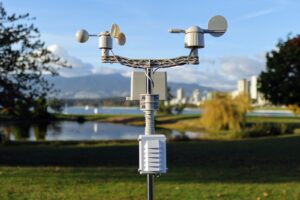Evaluating the Potential of LPWAN in Saudi Arabia and UAE’s IoT Ecosystem
Advantages of Using LPWAN for IoT Applications
The advantages and disadvantages of LPWAN in IoT applications have made it a focal point for businesses in Riyadh and Dubai seeking to enhance their IoT infrastructure. One of the most significant advantages of LPWAN is its ability to provide long-range communication over several kilometers while maintaining low power consumption. This feature makes LPWAN particularly attractive for IoT applications in industries such as agriculture, logistics, and smart cities, where devices are often distributed over large areas and are expected to operate for years without frequent battery replacements.
In Saudi Arabia, where vast agricultural lands are integral to the economy, LPWAN is proving to be a game-changer. IoT devices equipped with LPWAN technology can monitor soil moisture levels, weather conditions, and crop health across extensive farms, transmitting data to a central hub located miles away. This real-time data allows farmers in Riyadh to make informed decisions that enhance productivity and sustainability. Similarly, in Dubai, LPWAN’s long-range capabilities are being leveraged in smart city initiatives to monitor and manage infrastructure, such as street lighting, parking, and waste management, improving urban efficiency and reducing operational costs.
Another advantage of LPWAN is its cost-effectiveness. LPWAN networks are generally less expensive to deploy and maintain compared to cellular networks, making them an ideal choice for IoT applications that require large-scale deployments with minimal operational expenditure. This cost advantage is particularly appealing to businesses in the UAE and Saudi Arabia, where large-scale IoT projects are becoming increasingly common. By choosing LPWAN, businesses can achieve significant cost savings while still benefiting from reliable and efficient communication for their IoT devices.
Disadvantages and Limitations of LPWAN in IoT Applications
While LPWAN offers numerous advantages, it also comes with certain disadvantages and limitations that businesses must consider. One of the primary drawbacks of LPWAN is its relatively low data transmission rate. LPWAN is designed to transmit small amounts of data over long distances, making it unsuitable for IoT applications that require high-bandwidth communication, such as video streaming or real-time analytics. This limitation can be a significant challenge for businesses in Riyadh and Dubai that are looking to implement IoT solutions requiring large-scale data transfer.
In addition to low data rates, LPWAN also has limited network capacity. As the number of connected devices increases, the network may become congested, leading to delays in data transmission and reduced overall performance. This can be a critical issue in densely populated areas like Dubai, where IoT deployments are expected to scale rapidly. Businesses need to carefully assess their IoT requirements and consider whether LPWAN’s network capacity can meet their needs or if alternative communication technologies would be more suitable.
Security is another concern associated with LPWAN. While LPWAN protocols include basic security features, they may not offer the same level of protection as other IoT communication technologies, such as cellular networks. This makes LPWAN more vulnerable to certain types of cyberattacks, which can compromise the integrity and confidentiality of the data being transmitted. For businesses in Saudi Arabia and the UAE, where cybersecurity is a top priority, this limitation of LPWAN must be addressed through additional security measures or by choosing a more secure communication technology for their IoT applications.
Weighing the Pros and Cons of LPWAN for Future IoT Deployments
The advantages and disadvantages of LPWAN in IoT applications highlight the need for businesses in Riyadh, Dubai, and across the Middle East to carefully evaluate their specific requirements before selecting a communication network for their IoT projects. While LPWAN offers significant benefits in terms of cost, range, and power efficiency, its limitations in data transmission rates, network capacity, and security must be taken into account.
For businesses in Saudi Arabia, particularly those involved in agriculture and smart city projects, the advantages of LPWAN may outweigh its disadvantages, making it an ideal choice for long-range, low-power IoT applications. However, for more data-intensive applications, alternative networks like cellular or satellite may be more appropriate to ensure reliable and secure communication.
In Dubai, where the focus is on developing cutting-edge smart city infrastructure, a hybrid approach that combines LPWAN with other communication technologies might be the best solution. This would allow businesses to take advantage of LPWAN’s strengths while mitigating its weaknesses, ensuring that their IoT deployments are both cost-effective and capable of meeting the city’s ambitious goals for innovation and connectivity.
In conclusion, the decision to use LPWAN for IoT applications requires a careful analysis of both its advantages and disadvantages. By understanding the specific needs of their IoT projects and the capabilities of LPWAN, businesses in Riyadh, Dubai, and across the Middle East can make informed decisions that drive successful IoT deployments. As the IoT landscape continues to evolve, the role of LPWAN will likely expand, offering new opportunities and challenges for businesses looking to leverage the power of connected devices in their operations.
—
#LPWAN #IoTNetworks #TechInnovation #RiyadhTechnology #DubaiIoT #SaudiArabiaInnovation #UAEIoT #IoTApplications













